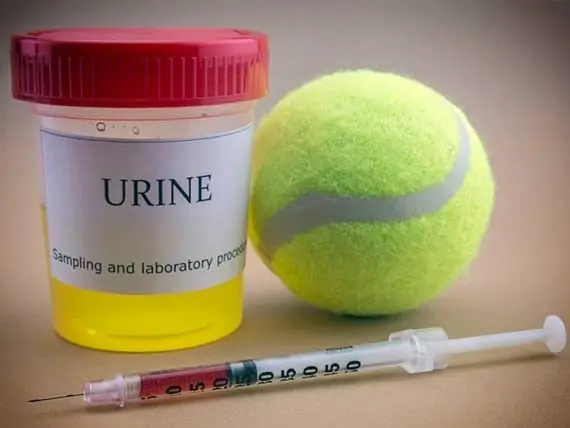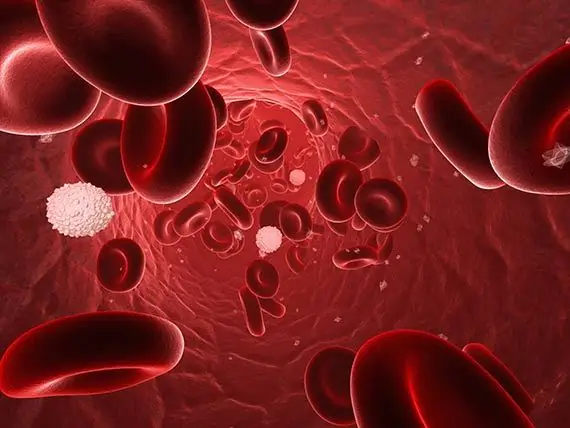
- Yazar Daisy Haig [email protected].
- Public 2023-12-17 03:15.
- Son düzenleme 2025-06-01 06:48.
Peki bu utanç verici kakao testi ne için?
Evcil hayvanınızın arka tarafının plastik bir çubukla kırılması yeterince stresli, değil mi? Ne anlamı var?
Diyorsunuz ki: Eğer amaç evcil hayvanımı daha sağlıklı ve parazitlerden arındırmaksa, kararınıza güveneceğim, ancak şunu söylemeliyim ki, dışkı kontrolleri bir tür acımasız ve alışılmadık bir ceza türüdür. Erkek ve kırk yaşıma gelene kadar bu tür bir aşağılanma hissetmiyorum, değil mi? Ve dışkı o kadar da yardımcı olmuyor, değil mi?
Diyorum ki: Başlangıç olarak, evcil hayvanınızın alçak çubuğa yenik düşmesine gerek yok. Taze bir numune genellikle, yıllık ziyaretinizden önceki sabah (veya öğleden sonra) veya evcil hayvanınızın gastrointestinal semptomlardan muzdarip olduğu herhangi bir zamanda kolayca alınır. O kadar zor değil, gerçekten. Ve eğer zamanlama tam olarak doğru değilse (en iyi sonuçlar için dışkı bir saatten daha eski olmamalıdır), veteriner hastaneniz kesinlikle size uygun bir zamanda süper taze bir numune getirme hakkınızı reddetmeyecektir. Söz vermek.
Ve evet, dışkı muayeneleri nispeten ucuz ve rutin olsa da vazgeçilmezdir. Ancak bu yazının göstereceği gibi, tüm dışkı testlerinin evcil hayvanlarınızda parazit enfeksiyonu tespit etmeyeceği de doğrudur. Bu nedenle yıllık ve/veya seri dışkı muayeneleri gerekli olabilir.
Şimdi testin birincil amacı için:
Veterinerler her zaman evcil hayvanınızın mide-bağırsak sistemine girebilecek parazitleri ararlar. Elbette, biz insanlar da parazit alabiliriz, ancak modern yaşam tarzlarımız parazit enfeksiyonuna daha az elverişli olma eğilimindedir. (En son ne zaman bir ya da iki kedi pisliğini solumak için bahçeye dudaklarını yere değdirmeye gittin?)
Evet, evcil hayvanlar çok sayıda parazit alır. Burada [yarı tropikal Güney Florida olan parazit cennetinde] gördüğüm en yaygın mide-bağırsak parazitlerinin bir örneği:
Köpeklerde ve kedilerde yuvarlak solucanlar.
Evcil hayvanlarda kancalı kurtlar
Evcil hayvanlarda kamçı kurtları
Evcil hayvanlarda Giardia

Evcil hayvanlarda karaciğer parazitleri
Evcil hayvanlarda karaciğer parazitleri
coccidia in pets
i’ll not go into the gory details on each but you can click on the links and check out the info for a better understanding of how these parasites can potentially affect your pets and even your human family.
sure, pet-popular parasites don’t often infect humans in the so-called, “developed” nations all of you reading this likely live in, but that doesn’t mean it doesn’t happen. roundworms and hookworms are still a factor in humans in the us, as is giardia, which will give you the nastiest case of diarrhea you can imagine short of amoebic dysentery.
since veterinarians are also on the front lines when it comes to public health, consider that fecal exams are not just necessary for healthy pets, they’re essential for healthy humans, too, more so if your family members are very young children, very old adults or otherwise immunocompromised (transplant patients, hiv-positive humans, chemo recipients, etc.).
how do we identify these critters in the fecal exam?
the short answer: with a microscope.
the long answer: we take a tiny sample of your pet’s stool (very fresh is always best). a few grams is enough (think an eighth of a teaspoon if that’s easier). then we put it through one of three processes.
1. the smear: we take about a half gram of stool and smear it onto a microscope slide to search for parasites (and bacteria) directly. many times we’ll see them swimming about. finding evidence of parasites in a simple smear is often indicative of severe infection.
2. the float: this method relies on mixing the stool with a special solution. it filters out the big pieces of stool in a tube or other cylindrical vessel and allows the eggs and other small critters to float up to the top, buoyed by the solution’s specific gravity. a microscope slide’s cover slip is typically used to recover the floaters. some parasites, however, aren’t amenable to flotation. eggs seem to do best through this method.
3. centrifugation: spinning the heck out of stool in a centrifuge when it’s mixed in a sugar solution picks up about 50% more parasite eggs and oocysts than through flotation. therefore, i like this method best for worm eggs, giardia, and coccidia--though i’d never go without a smear. problem is, most hospitals don’t yet use this method. it’s more expensive than others and research demonstrating it’s much greater efficacy is fairly recent.
so now you know the truth: not all fecal exams are created equal. not only does this test rely on careful selection of materials and methods, it also requires a trained eye. in our practice, for example, one of our techs detects parasites about 50% more often than the veterinarians and other techs/assistants. (that’s why we also do floats so that she can check them all at her convenience when she comes back from her day off.)
it’s also true that even a parasite-infected animal will often not come up positive on a fecal test. human error and equipment choice are factors, but so is the parasite itself. sometimes they do not make themselves known in the stool. worms sometimes aren’t shedding their eggs and subclinical (low-grade or smoldering) infections may not reveal much, either.
again, that’s why it’s important to perform this test as often as is reasonable. for all dogs and cats at least three times during the first few months of life. i want to see at least two negative tests in a row, a month apart, before i’ll feel comfortable that my patient is parasite-free.
for adults, once a year is great--that is, unless they show gastrointestinal illnesses. in this case, serial fecal tests make sense--or at least one every time the symptoms recur until a definitive diagnosis is made (whether it’s parasites or something else).
ultimately, fecal tests are a critical component of our veterinary hat of tricks. doing without may seem like the economically wisest thing in the absence of gastrointestinal symptoms, but consider: parasites can wear pets down in ways you might not expect. and it’s never wrong to be too safe in the presence of diseases that may also affect your family. ‘nuff said.
Önerilen:
Köpekler Ve Kediler İçin Dışkı Nakli Nedir?

İnsanlarda dışkı naklinin başarısı göz önüne alındığında, veteriner hekimler ve veteriner araştırmacıları, prosedürün kronik bağırsak hastalığı ve ishali olan köpeklere ve kedilere de yardımcı olup olmayacağını merak ettiler. Dışkı nakli tedavisinin nasıl çalıştığını ve evcil hayvanınız için anlamlı olup olmadığını öğrenin
Titer Testi Nedir Ve Evcil Hayvanınız İçin Doğru Mu?

Artan kamuoyu endişesini gidermek ve bazı aşıların bazı evcil hayvanlar üzerinde olumsuz bir etkisi olabileceğine dair kanıtları ele almak için aşı ihtiyacını belirlemek için kullanılan tıbbi prosedürlerden biri titre testidir. Burada daha fazla bilgi edinin
Kanserli Hayvanlarda Evrelemenin Önemi, Bölüm 3 - Kanserli Evcil Hayvanlar İçin İdrar Ve Dışkı Testi

Tedavideki evcil hayvanlar için kanser evreleme sürecinin bir parçası, vücudun tüm farklı sıvılarını test etmektir. Bu bölümde Dr. Mahaney idrar ve dışkı testi sürecini açıklıyor. Devamını oku
Kanserli Hayvanlarda Evrelemenin Önemi, Bölüm 2 - Kanserli Evcil Hayvanlar İçin Kan Testi

Kan testi bize evcil hayvanlarımızın vücutlarının iç sağlığı hakkında çok şey söyler, ancak tam bir resmi ortaya çıkarmaz, bu nedenle kanın tam bir değerlendirmesi, veteriner hekimlerin bir evcil hayvanın durumunu belirlerken sıklıkla önerdiği testlerden biridir. sağlık veya hastalık
Evcil Hayvanınızın İyiliği İçin Evcil Hayvan Maması (Bilmeniz Gerekenler)

Aşağıda, evcil hayvan sahiplerini etiketleri okuma ve evcil hayvanları için güvenebilecekleri yiyecekleri seçme konusunda eğitmeye yardımcı olacak bir dizi gönderi bulunmaktadır. Pazarlama hileleri ve yanıltıcı etiket iddialarıyla kandırılmak kolaydır… evcil hayvanlar ne yediklerini sorgulamazlar
